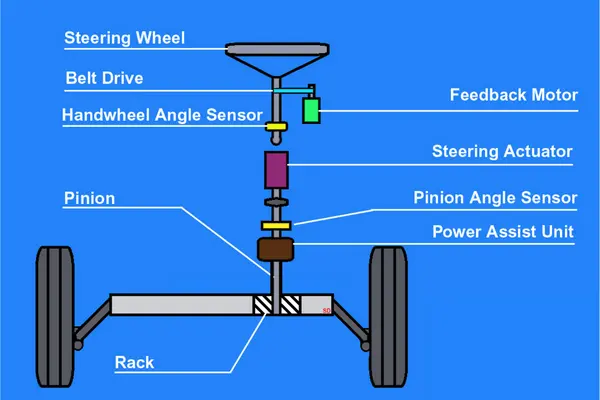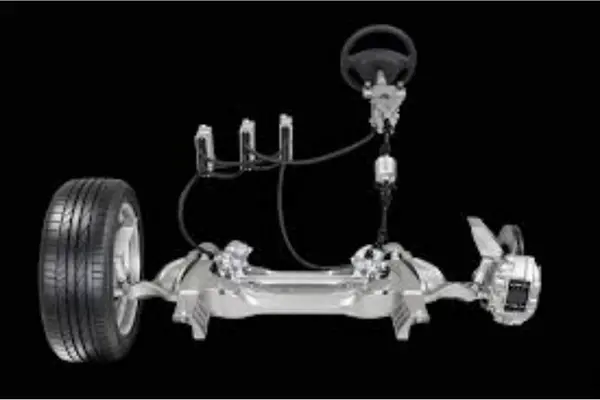Introduction
The automotive industry has proposed the idea of “smart vehicles” multiple times in recent years. This idea is defined differently by each vehicle designer, with the majority of attention going toward process automation to obtain a quicker reaction. Along with sensors and actuators, this also entails substituting electrical signals for mechanical connections and linkages. Among these novel elements is the steer-by-wire technology.
1. How a steer-by-wire system operates:
A steer-by-wire system, as you may have guessed with some accuracy, effectively substitutes the mechanical linkages with electronic connections between the steering wheel and steering rack, or the steering column.
The steering wheel position sensor gauges the driver’s desired steering angle and relays this information to the control unit, which directs the steering actuator to make the turn. The required steering torque is produced by another actuator on the steering wheel, giving the driver a realistic feel.

2. Benefits of steer-by-wire technology include:
The weight savings resulting from the steer-by-wire system’s fewer mechanical components is one of its clear benefits. This style of design also lessens general wear and tear and enhances maintenance capacity. Since there are no restrictions on where designers can place the steering wheel, they can also create more design alternatives.
Additionally, it is not necessary to build different steering systems for cars with left- and right-hand drives. As a result of noise and vibrations not being directly transferred, the car’s cockpit has a better acoustic design.
3. Steer-by-wire fail-safe mechanisms:
Even a steer-by-wire system needs some redundant systems that can take over in the event of a malfunction, just like any other x-by-wire system does. A second steering motor is often added as a backup for signal loss. Controlling the amount of driving force applied to the front wheels, which would produce a steering effect, is another intriguing idea.

4. Design enhancements and optimizations:
Engineers can improve traditional steering feedback that has mechanical limitations.
- Steer-by-wire, free of physical limits, allows for enhanced feedback optimization.
- This entails giving the steering wheel additional configuration options. Software-based solutions for enhancing the feel can help reduce the amount of time needed to fine-tune it.
- Road feedback enhances steering feel, while steer-by-wire adjusts it based on driving mode. (For instance, under “comfort” mode, the system will mute these bumps on the road.)
- Another design adjustment made possible by the steer-by-wire technology is the virtual steering ratio.
The chassis and the tuning of the vehicle reaction solely limit the steering because there is no mechanical linkage.
- You can also simulate extreme rack configurations by varying the steering ratio, which increases the vehicle’s agility and controllability. The steering ratio defines the ratio of the number of degrees the steering wheel turns to the number of degrees the wheel(s) results in.

Moreover, you can apply a steering angle offset using a virtual steering ratio. This contributes to the vehicle’s increased steering stability. Steering stability assist or a controller stabilizes the car by adjusting the steering angle or yaw rate.
Both are practically undetectable active safety elements that can improve the vehicle’s stability. In the event of an unusual detour from the road, they can react quicker than a human and aid in reducing the effects of steering instability.
5. Steer by Wire Controls Development at Dorleco:
Therefore, a steer-by-wire system can aid in enhancing the vehicle’s reaction while also permitting design changes and enhancements that would not be feasible with a traditional steering system. It also permits more flexibility in choosing the steering wheel’s location, reduced physical component wear and tear, and improved noise and vibration-damping design for vehicles.
Our job at Dorleco is to create control algorithms and provide software for steer-by-wire systems in electric and hybrid cars.

